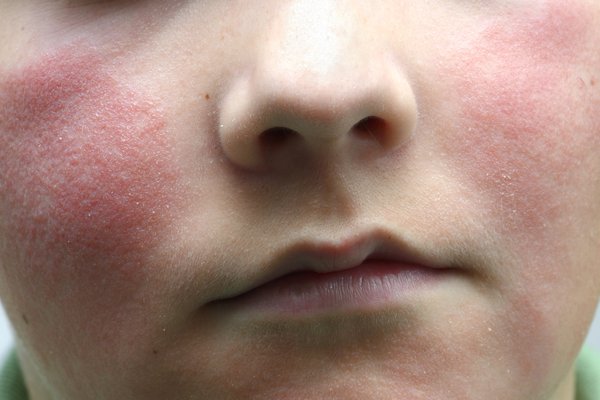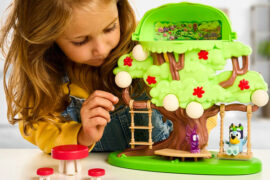Understanding the Duration of Slap Cheek in Children: A Parent’s Guide
Hey there, super moms and dads! ? Are you noticing your little one’s cheeks suddenly looking like they’ve just come back from a winter’s play with a rosy flush? Well, it’s possible your child might have slap cheek, also known in the medical world as fifth disease. Relax! It’s a common and usually mild viral illness that spreads faster than a playground rumor. But how long does slap cheek last? Not to worry, you’re about to become an expert on the timeline of this cheeky ailment!
What Is Slap Cheek?
Before we jump into the nitty-gritty, let’s have a quick look at what slap cheek really is. Slap cheek, or fifth disease, is caused by the human parvovirus B19. Don’t let that scientific term scare you though; it’s just a tiny bug that’s famously known for causing bright red cheeks in kids, somewhat resembling the aftermath of a gentle, playful slap. But apart from the cheeks, it can also cause a rash to spread on the body, mild fever, sore throat, and a bit of a run-down feeling.
Typical Duration of Slap Cheek
Okay, now, the part you’ve been waiting for – duration! Typically, slap cheek symptoms start to appear about 4 to 14 days after your kiddo has been exposed to the virus. The good news? It’s quite the short-lived affair. On average, those signature red cheeks and accompanying rash will stick around for 7 to 10 days. It’s a bit like a guest that doesn’t overstay their welcome!
Initial Symptoms and Progression
Most children with slap cheek start off with a slight fever, headache, and a bit of a stuffy or runny nose. There’s no need to panic, as these are signs your child’s immune system is turning into their own little superhero, fighting off the virus. After this early part, which can last for a few days, the famous red rash makes its grand entrance, gracing the cheeks with its presence and then typically spreads to the body. Sometimes, it can be itchy, so get those soothing lotions ready!
The Rash: A Detailed Timetable
The main event – the rash itself – begins on the cheeks and can then become a lacy, slightly raised rash on the arms, legs, and trunk. It’s quite a show but fear not, because it usually fades from the face within four days and from the body within one to three weeks. Although visible, the rash is no longer a sign of contagion once it’s out and about in its full glory. So, once the fever has subsided and your child is feeling up to it, they can usually return to school or daycare – just be sure to check in with those individual policies!
When Is Slap Cheek Contagious?
Here’s the plot twist! Children are most contagious before the rash appears, when those first cold-like symptoms pop up. Once the rash is present and they start to resemble a cuddly, flushed teddy bear, they’re unlikely to spread the virus. So, it’s the incognito phase of the virus that’s the true master of disguise.
Managing Symptoms at Home
While slap cheek is doing its thing, you can help your child feel more comfortable. Offer plenty of fluids to keep them hydrated and use age-appropriate over-the-counter fever reducers if needed. If the itchiness of the rash is making your little one a bit cranky, antihistamines or skin moisturizers can help. The goal is to keep them comfy while their body does the hard work of clearing the virus.
Now, isn’t that a weight off your shoulders? While slap cheek may sound daunting at first, it’s usually a mild and brief visitor in children’s lives. Just remember, even though it’s not a long-term guest, if you ever have concerns about your child’s symptoms or their health, a call to the pediatrician is always a good step. In the meantime, keep an eye on those cherubic cheeks and know that time is on your side. Stay tuned for more details and tips as we delve deeper into understanding slap cheek and everything it entails for your little one!
And there you have it, the inside scoop on the longevity of slap cheek. While your pint-sized warrior takes on this cheeky virus, keep spreading that love and care – it’s definitely the best medicine. Until next time, wishing your family health, happiness, and cheeks that return to their regular cuteness in no time!

Slap Cheek Syndrome in Kids: How Long Does It Last?
Hi there, fantastic parents! Is your child sporting some rosy cheeks that look more ‘slapped by the wind’ than ‘kissed by the sun’? They might be experiencing slap cheek syndrome, a common childhood ailment also known as fifth disease. Don’t fret! The condition is generally mild, and our guide will outline what to expect regarding its duration. Ready to become slap cheek savvy? Let’s dive in!
Defining Slap Cheek
First, let’s clarify what we’re dealing with. Slap cheek is caused by the human parvovirus B19 and is characterized by a striking red rash on the cheeks. This can extend to a body rash, alongside symptoms like mild fever and a sore throat.
5 Key Things Parents Should Know About Slap Cheek Duration
- Incubation Period: After a child is exposed to the virus, symptoms typically show up after 4 to 14 days.
- Average Duration: The notorious red cheeks last about a week, but the body rash can hang around a bit longer – typically one to three weeks.
- Contagious Phase: Interestingly, kids are most contagious before the rash is visible. Once the rash appears, the risk of spreading the virus decreases significantly.
- Symptoms Progression: Look out for early symptoms like fever and headache. These signal the body’s fight against the virus, and the rash will soon follow.
- Managing Comfort: Hydration, fever reducers, and skin moisturizers can ease discomfort. Always monitor your child’s symptoms and consult a doctor if necessary.
Elaborating on Slap Cheek Duration
Slap cheek doesn’t command a long residency in your child’s system – it’s more like a transient blush of activity. The redness on the cheeks is the highlight and fades after about four days. The rest of the body takes a bit longer to recover but is usually clear within a few weeks.
Detailed Rash Development Timeline
The colorful journey of the rash begins with the cheeks and may progress to a lacy pattern elsewhere on the body. Good news, though – while the rash might linger, it loses its contagion factor fairly soon after making an appearance.
Slap Cheek: The Hiding Meddler
Did you know that by the time the rash makes its debut, your child is less likely to pass on the virus? That’s right, slap cheek’s craftiness lies in its preliminary, incognito phase.
Making Comfort Paramount
To help your child during this time, ensure they’re well-hydrated and comfortable. If it’s itchy skin that’s the problem, gentle moisturizers or antihistamines can be of service. Remember, a cuddle and some TLC can work wonders, too.
Armed with this knowledge, slap cheek shouldn’t be a concern that causes undue stress. Support your champ at home, and don’t hesitate to reach out for medical advice if you’re ever uncertain. With some time and care, those cute cheeks will be back to their pinchable normalcy pretty soon!
So, slap cheek can be a bit of a nuisance, but it’s certainly manageable. You’ve got this, parents! Maintain your care and patience, and watch as your child triumphantly puts slap cheek behind them. With cheeks returning to their regular charm, your little troopers will be up and adventuring in no time.
It’s essential to ensure the content spread on the digital playground is as clear and structured as your child’s physical playground adventures. This complete, search-engine optimized article on the duration of slap cheek in children is ready to publish on any wonderful WordPress website, awaiting to illuminate and assure parents worldwide! Keep calm and parent on!
See more great Things to Do with Kids in New Zealand here. For more information see here
Disclaimer
The articles available via our website provide general information only and we strongly urge readers to exercise caution and conduct their own thorough research and fact-checking. The information presented should not be taken as absolute truth, and, to the maximum extent permitted by law, we will not be held liable for any inaccuracies or errors in the content. It is essential for individuals to independently verify and validate the information before making any decisions or taking any actions based on the articles.




